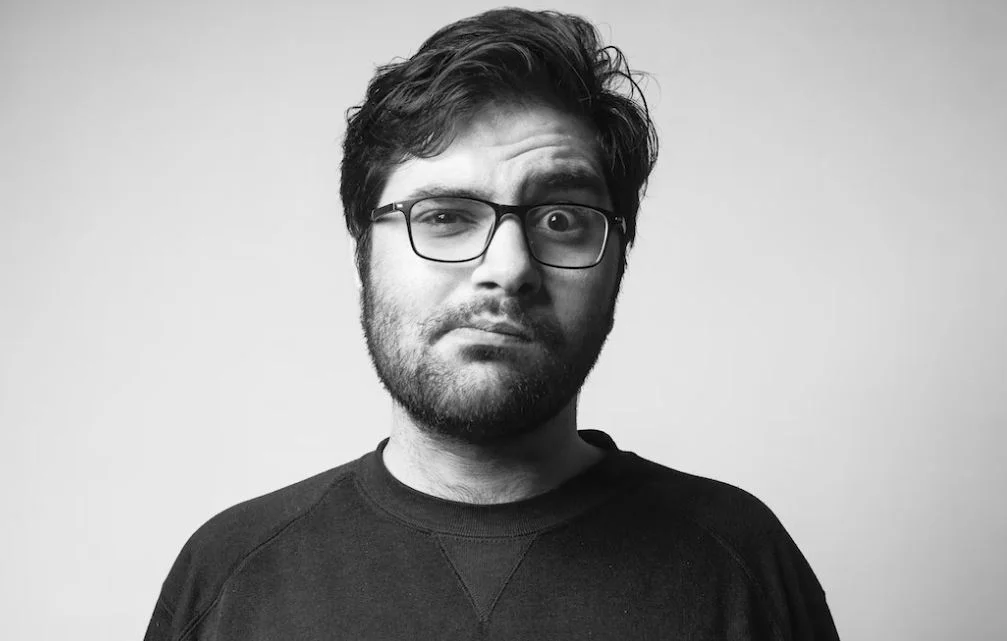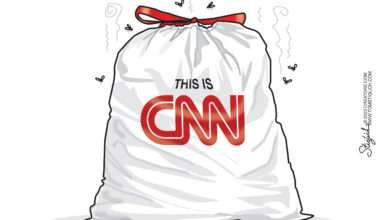Health Reform after Obamacare: Return of the Single Payer
The Supreme Court’s hearing of the lawsuit against Obamacare was one of the toughest moments for our current president. It coincided with the House of Representatives voting down his budget 414-0, numbers that look more like the Giants beating the Patriots than Congress voting on a presidential budget bill.
Many commentators have declared the imminent death of Obamacare when the Court in all likelihood strikes down the individual mandate as unconstitutional. That may very well be the Court’s ruling, but to assume that this will also be the end of health care statism in America is more than premature. It is irresponsible.
 Socialized medicine was declared dead in America after Bill Clinton’s Health Security Act went down in flames in 1993. But it did not even take 16 years before a Democrat president once again introduced an all-out health reform bill. Between these two legislative behemoths were numerous smaller proposals for advancing government in health care. After the Health Security Act was defeated, Clinton and – shame on them – the Republican-led Congress in 1997 created the SCHIP program. This “Medicaid for Kids” has been expanding relentlessly since then and is today within reach of socializing health insurance for children. Children are relatively cheap to insure and their removal from the private insurance market has contributed to higher premiums for adults. With higher insurance premiums, fewer people can afford health insurance; with more people without coverage, liberal theory says that the support for government-run health care will increase.
Socialized medicine was declared dead in America after Bill Clinton’s Health Security Act went down in flames in 1993. But it did not even take 16 years before a Democrat president once again introduced an all-out health reform bill. Between these two legislative behemoths were numerous smaller proposals for advancing government in health care. After the Health Security Act was defeated, Clinton and – shame on them – the Republican-led Congress in 1997 created the SCHIP program. This “Medicaid for Kids” has been expanding relentlessly since then and is today within reach of socializing health insurance for children. Children are relatively cheap to insure and their removal from the private insurance market has contributed to higher premiums for adults. With higher insurance premiums, fewer people can afford health insurance; with more people without coverage, liberal theory says that the support for government-run health care will increase.
Another form of proposed advancement of government in medicine has been the opening of the federal employee health insurance program to all Americans. Two Democrat presidential candidates, Bill Bradley in 2000 and John Kerry in 2004, were big champions of this idea. The idea is to create a “public option” that slowly but relentlessly will outcompete private insurance. The original version of Obamacare came with a modified version of the Bradley-Kerry idea. (The public option is still in Obamacare, just dormant for now.)
In other words: health care statists have never given up. They have just shifted tactics. When Obama won decisively in 2008 and Democrats took control over Congress they felt their time had come again. A defeat in the Supreme Court may mean defeat for Obama in November, but regardless of how the election goes, health care statists will not give up.
The battle for health care freedom is not over. Far from it.
The question is: what’s next? Some conservative commentators, including Rush Limbaugh, have suggested that the single-payer model will resurface. Having researched and written about health reform for a good decade now, I am inclined to agree: all experience shows that single-payer health care is the only goal that will satisfy a health care statist.
A comparison between Obamacare and the Clinton plan reinforces the impression that single-payer is next on the liberal health policy agenda. The two reform plans have several key policy goals in common:
- Expand government in health care;
- Change the way health care is paid for and the way it is distributed; and
- Introduce new criteria for who shall get health care and who should not.
They also share important policy methods for achieving these goals:
- Mandatory individual health insurance coverage;
- Separation of premiums from health risk, i.e., community rating;
- Introduction of federal coverage mandates; and
- Guaranteed issuance of insurance plans.
The only major difference is that the Clinton plan was an open single-payer model, while Obamacare relies on the individual purchase mandate. (In the Clinton plan, employers were mandated to provide insurance – a small but crucial difference.) The single-payer feature was a major reason why the Health Security Act died in Congress.
Obama’s health reform team learned from Clinton’s mistake and omitted the single-payer element. This was, of course, deliberate. It is in the president’s desk drawer, and will be pulled out in the event he is re-elected. He could use the single-payer model to scoop up the pieces left over after the Supreme Court fires its judicial artillery at his Affordable Care Act.
Contrary to the individual purchase mandate, a single-payer financing model for health care is shielded from judicial challenges. Declaring a single-payer health care system unconstitutional because it is funded through taxation would be like declaring public education or Social Security unconstitutional because they are funded through taxation.
Although I personally do not believe that the government has the right to tax us and spend the money on entitlements like public education or Social Security, the Supreme Court has the last say on that. It would be earth-shattering if the Court was ever faced with a challenge to a single-payer health care system and declared that government cannot tax us and spend the money on entitlements.
The health care statists know this. They also knew that they could not get Obamacare passed as a single-payer plan. Therefore, a defeat of the individual mandate offers them a perfect opportunity to revive single-payer, either after the November election or later. Therefore, it is very important that friends of health care freedom are prepared to meet the challenge from health care statists.
By definition, single-payer health has only one source of health care payments. The Clinton plan relied on a 7.9 percent payroll tax to pay for our health care. This funding mechanism came with a plan to keep the tax rate steady – effectively a guarantee that the health care income tax would never go up. This is of course a ludicrous promise to make: a quick historic review of the growth in health care costs and the growth in compensation of employees reveals that health care outpaces the proposed tax base at every corner.
Suppose, for the sake of analysis, that the Clinton plan had become the law of the land in 1987 (the earliest year with available, consistent data). In order to generate sufficient revenues to pay for our health care from that year until 2010, the federal government would have had to raise the tax almost every year. By 2010 the tax would no longer be 7.9 percent but 12.4 percent.
This is, of course, assuming that government would not ration health care. If it chose to maintain the payroll tax at its original level, it would have had to slash away a large portion of the health care produced in America every year:
- In 2010 the output value of all health care in America was $1,619 billion;
- If the only funding source would be a 7.9-percent payroll tax, there would only have been $1,026 billion available in 2010;
- The American people would have had to forfeit $593 billion worth of health care in 2010 alone.
Who would have been deprived of health care? Who would have made the decisions on who should get, and not get, health care?
Health care statists avoid the rationing problem like the plague. If they revive single-payer again, they should face these questions every time they take their socialized-medicine idea to the public arena.





(CDN) #news Health Reform after Obamacare: Return of the Single Payer: The Supreme Court’s h… https://t.co/JIOeERk0 #conservative #tcot
Health Reform after Obamacare: Return of the Single Payer https://t.co/1iFvj1P6
RETURN OF THE SINGLE PAYER – Why health care statists will respond to the defeat of Obamacare with their dumbest idea: https://t.co/2nRX998o
Health Reform after Obamacare: Return of the Single Payer https://t.co/PdLIkxGp
Health Reform after Obamacare: Return of the Single Payer https://t.co/J5UaGcgw
Health Reform after Obamacare: Return of the Single Payer https://t.co/g02aexjd #COMMONSENSE #FREEDOM #TCOT #SOT
Health Reform after Obamacare: Return of the Single Payer https://t.co/ZMMaLRVo #CDNNow #tcot
Health Reform after Obamacare: Return of the Single Payer https://t.co/ZMMaLRVo
I honestly find Health care about as interesting as dirt. But I thought this article brought some light to my dark understanding. Still don’t understand the major problems. I have military health care. I don’t pay anything for anything including pills. I GET PAID to go to my appointment’s–literally.
But the few times I was rushed to an emergency rooms from my seizures..I had a bill which I had to pay out of pocket, but the hospital based my payment on my income. I don’t see what was so unfair about that, I was very thankful. My bill was close to 20k.
So why is everyone so upset with America’s health care system…? My only complaint is they need to include more holistic methods, like chiropractic and such, herbal remedies..but other then that…jeeze were great.
Robert,
First of all, thank you for your service. The military is a special case, and I am sure they provide good health care within their system, although I have met veterans who have a thing or two to say about VA health care. But when you go single-payer across the board you create enormous problems, one of them being that you kill innovation and quality-enhancing competition. Furthermore, single-payer systems are entirely focused on keeping costs down. I grew up in Sweden so I had first hand experience of what rationed health care can do (or can’t do) for you. If you are interested in this subject, please check out my book Remaking America: Welcome to the Dark Side of the Welfare State. You can get an ebook copy for something like $6 through Amazon. It explains in great detail what a single-payer system means in “real life”.